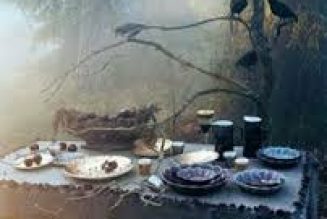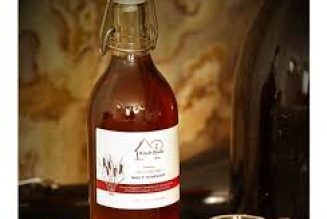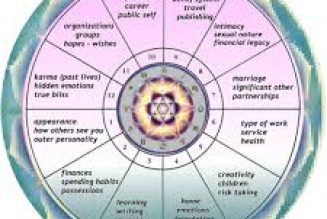If you live in an area that gets very hot during the summer months, cover herbs with a layer of mulch to keep them from drying out.
If you’re maintaining them in pots on your deck, opt for containers with their own water reservoirs (or use potting soil that contains water-retaining polymers).
Check the height details for your herbs and plant accordingly with taller herbs behind shorter ones.
Pay attention to the growth habit of your herbs too.
Creeping thyme will grow very differently from standard growth habit thyme, and that will have an impact on how it will act, and react, in the garden.
Your local nursery will stock cultivars that work well in your area.
They may not have all the herbs varieties you’ll find through mail orders or online suppliers, but chances are what you buy will work in your backyard.
Many herbs have standard, miniature, variegated, and creeping varieties. Some will also have cultivars that are more or less vulnerable to frost, heat and specific pests and diseases.
Knowing the planting zone you live in, as well as the spot you have in mind for your herb garden, will help you pick the best rosemary, lavender or sage for your needs if you do decide to buy from a national source.
Herbs like cilantro and dill grow quickly.
Start them early and keep pinching them back when you see flower buds.
Most herbs will stop putting the bulk of their energy into creating new leaves once they flower.
Leaves are typically what you want to cultivate, so delaying flowering is the goal here.
The fast growth spurt some herbs put on when the temps get hotter in summer is called bolting.
Plants shoot up quickly, start to flower, and begin to look scraggly.
Removing the buds and harvesting around a third of the plant will keep herbs viable longer.
HarvestingIt’s a good rule to wait until a plant is at least a few inches tall (this will vary from plant to plant) and a bit bushy before you start harvesting leaves.
Never take more than a quarter or a third of the plant at one time, and wait for at least that much to regrow before taking more.
Some herbs like chives, parsley and tarragon, taste much better fresh.
For these herbs, drying isn’t the best choice. When you’re ready to harvest the bulk of the plant in fall, check the best harvesting method (I have lots of specific info here), and freeze plants that don’t dry well.
You can wash and freeze herbs in freezer bags, or chop them into a bowl of water, stir, and freeze them into ice cubes.
The cubes can then be placed in freezer bags for single-serving portions you can add to soups or stews over the winter months.
Other herbs can come indoors to spend the winter on a sunny windowsill, overwinter in the garden, or produce seeds for next year’s crop and die off naturally (annuals).
There’s no point in growing an herb you don’t like using, but herbs are good for more than just cooking.
Lavender is a natural antibacterial, and it’s a muscle relaxer too.
Flower buds added to your bath can be more relaxing than soft music and candlelight.
Mint is great with lamb, but a soothing mint tea will also settle an upset stomach.
Learn a little about each herb you have in mind before you make your final choices.
That way you won’t miss out on a good candidate and have to wait until next year.
If you’re eyeing those adorable, tiny herb starts at the garden center (in their beguiling little pots), you don’t necessarily have to do a research marathon in order to get them installed successfully in your landscape.
Although there are some exceptions, herbs aren’t persnickety, and they’re pretty grateful for anything you can give them.
Those picturesque photos of herbs spilling out of old tires, discarded leather shoes and abandoned pottery shards aren’t far wrong.
Herbs can grow in spots where many other plants would take a look around, swoon and perish.
Five Helpful Tips for Growing Herbs in Your Backyard
These five tips will help you grow most of the common herb varieties you’re likely to fall in love with.
They’re basic but practical guidelines to get your herbs through the season without mishap.
Sun is important – Many herbs and a majority of garden plants need a reliable source of light for at least six hours a day.
Usually, that means direct outdoor sunlight, but if you want to grow herbs indoors, a windowsill herb garden is imminently doable if you can offer adequate window light or supplement with grow lights if you need to.
Perform this little test, either indoors or out: Wait till the sun is shining in the spot you have in mind, and then extend your arm. If you can’t clearly see your well-defined shadow (and all your fingers), the spot is probably too shady.
Give them good drainage –
Plants need a healthy root system to survive.
Kill the roots, and you kill the plant.
One of the easiest ways to sabotage your growing efforts is to create a situation where water dwells around a plant’s roots long enough to destroy them.
When that happens, the plant has no way to absorb minerals and moisture and starves to death.
Take a look at your soil to see if it’s the right consistency to absorb moisture and then release it to the water table in short order.
If you can’t get a trowel into your soil or it’s so porous it feels mealy, add quality top soil (or outdoor potting soil) and soil amendments.
If you can’t afford to rework a whole flowerbed to make it drain better, just dig a large hole (around three or four times larger than the plant’s pot), and amend that smaller area.
It’s a cheat, but we all know this isn’t a perfect world.
To learn more about your soil, Give them enough water – Herbs are sturdy little fighters that often come from environs where resources are thin on the ground, literally.
One thing they do need consistently, though, is water.
This can be a challenge, but if you plant herbs in a spot you view (or walk by) often, you’re more likely to remember they’re there and give them a revitalizing drink on a regular basis.
Plants don’t eat dirt to get nutrients.
They rely on water to dissolve the minerals they need and then extract the minerals from the moisture around their roots.
The irony here is that too much moisture kills the roots of many plants while too little makes it impossible for them to access nourishment.
Plants will often warn you when they aren’t getting enough water.
They’ll droop, turn yellow or develop brown leaf margins.
Watch for clues and you won’t go wrong.
You can also employ a cheat, like planting water-hungry herbs near downspouts where they’re more likely to get water when they need it — whether you’re being a good host or not.
Watch the heat – In some areas of the country, the heat can be brutal during high summer, and keeping herbs in very hot, arid conditions is challenging.
If a plant’s instructions suggest full sun but you know that you could cook an egg on your patio during hot summer afternoons, choose a spot that gets dappled light — or some welcome afternoon shade.
It’s also a good idea to let seedlings grow to eight inches or thereabouts before you begin harvesting your first crop.
Plants are processing plants for the leaves, flowers or seeds you want from them, but they’re also living things.
When you put their needs first, you insure future bounty






